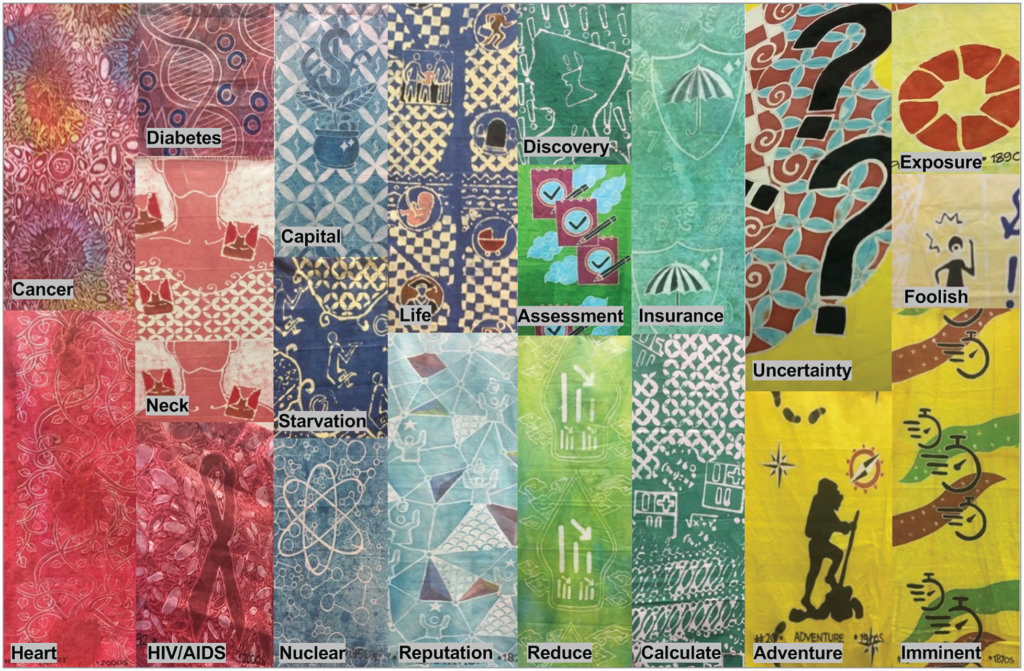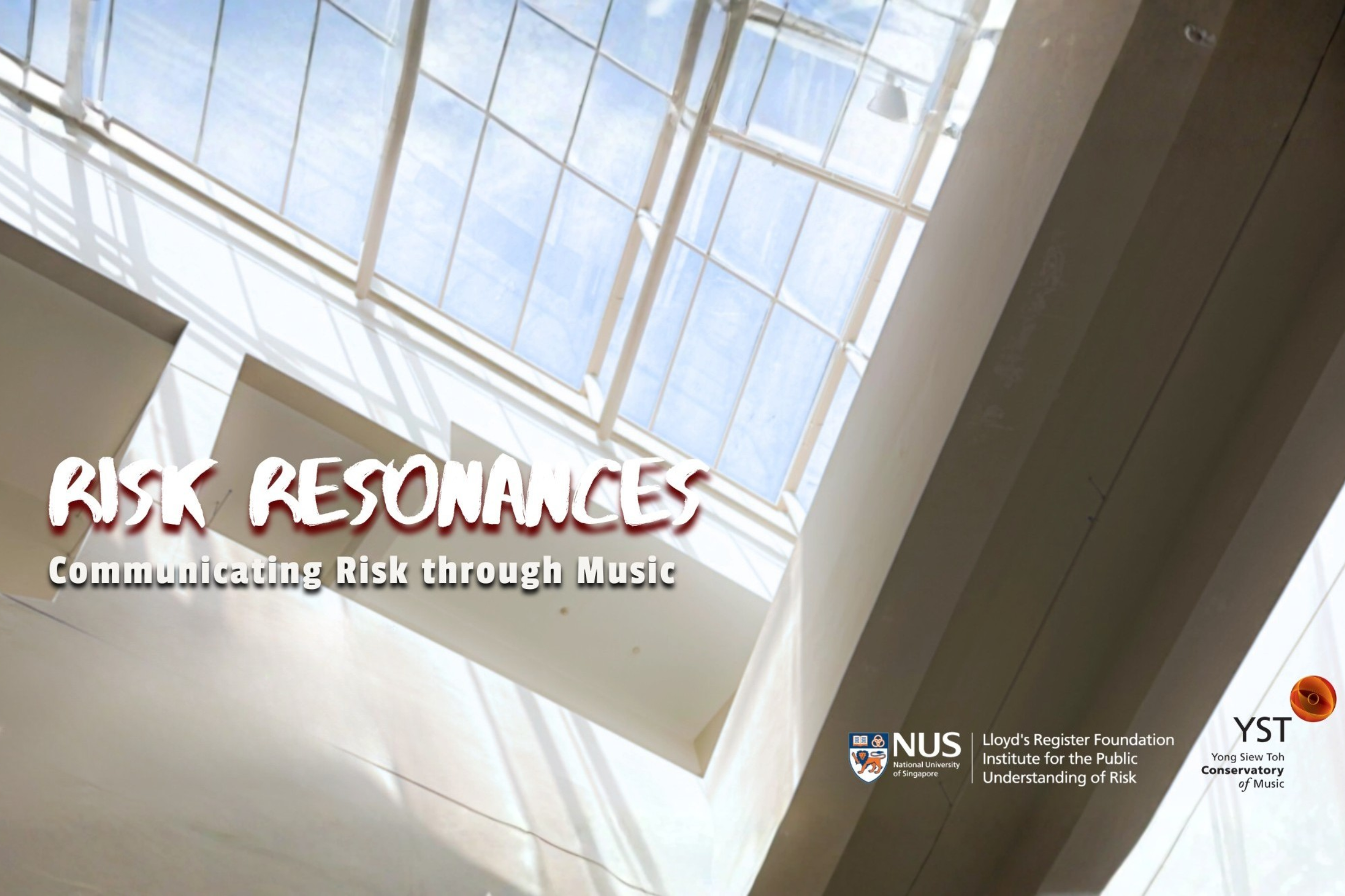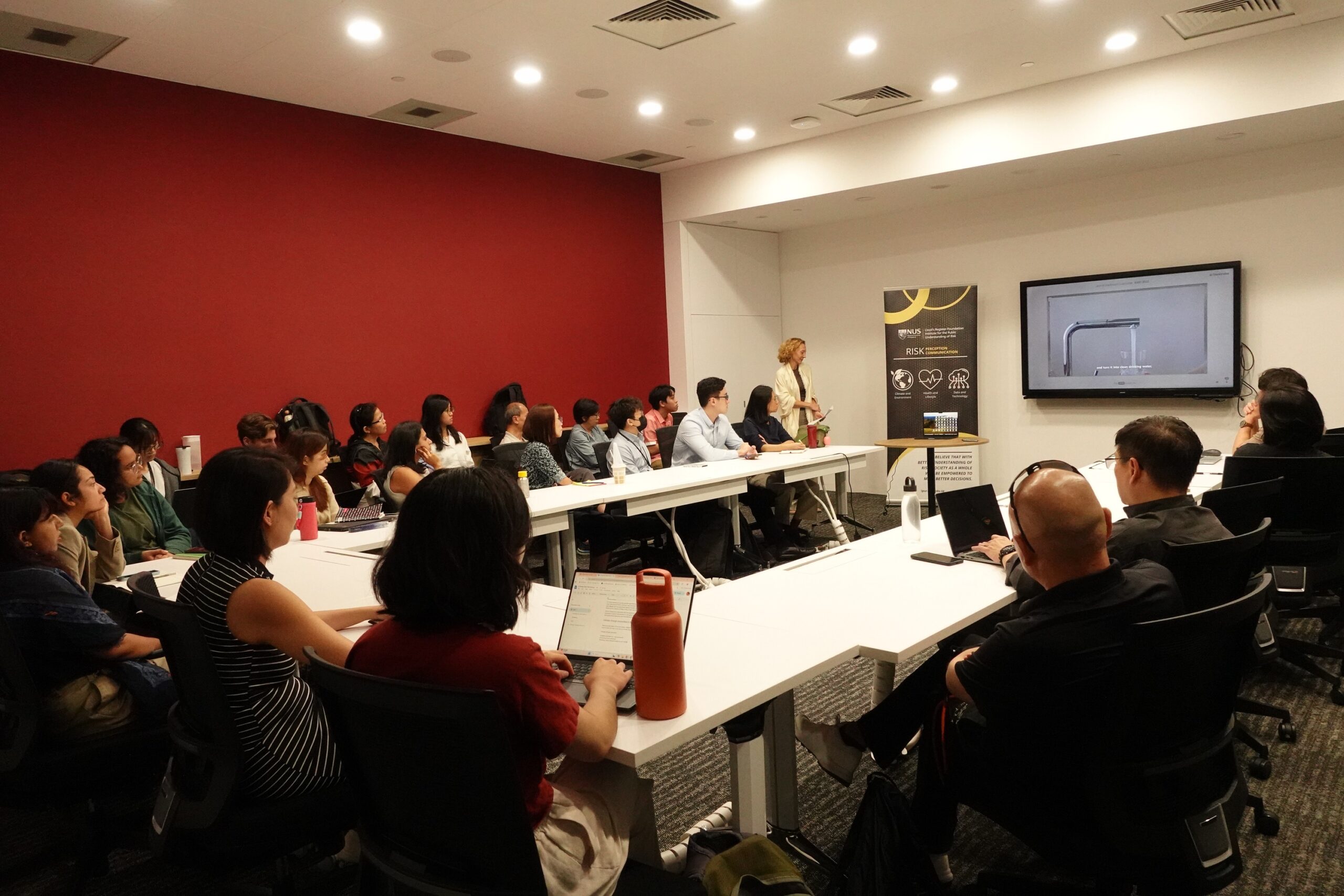
Have you ever come across a piece of literature or academic publication which was too intimidating or difficult to engage with? Or a series of figures, formulas and charts which you could not interpret?
Besides conventional methods such the written word, video or podcast, an often overlooked means of communicating information and insight is through art. This thought-process motivated the team at IPUR to work with Dr Pablo Suarez (IPUR artist-in-residence) and a group of Southeast Asian artists to develop a batik art installation.
Titled “RiskTalk”, the art piece was developed in 2019 to offer a glimpse into people’s perception or views regarding an issue. It involved curating and analysing a corpus of digitised newspapers, magazines, fiction, and non-fiction published since the 1810s to identify terms which have co-occured with the word “risk”.
Artistic representations can break down barriers of communication and engagement, and present information in a relatable format, making it easier for people to engage with and comprehend the risks. Furthermore, art can evoke emotions and empathy in ways that data and statistics alone cannot achieve. The opportunity to work with Dr Suarez and other artists also helped to foster a multidisciplinary approach to risk communication. Combining their fresh and creative ideas with IPUR’s expertise on risk-related trends, RiskTalk is a true blend of connecting art and science to enhance understanding, engage emotions, and to get people to think about the risks relevant to them today.
Publication in JAMA
On 24 July 2023, a review of RiskTalk was published in the Journal of the American Medical Association (JAMA). Focusing specifically on public health risk communications, the review entails the data and methods as well as the batik process and techniques used to put together the art installation.
The installation identified 4 main categories and selected the 5 most frequently used terms related to each category that appeared in at least 2 decades from the 1810s to the 2000s: health-related (heart, cancer, neck, diabetes, HIV/AIDS); non–health-related (nuclear, starvation, life, capital, reputation); risk action–related (reduce, discovery, assessment, calculate, insurance); and risk concept–related (imminent, uncertainty, exposure, foolish, adventure). Read the full review here.


